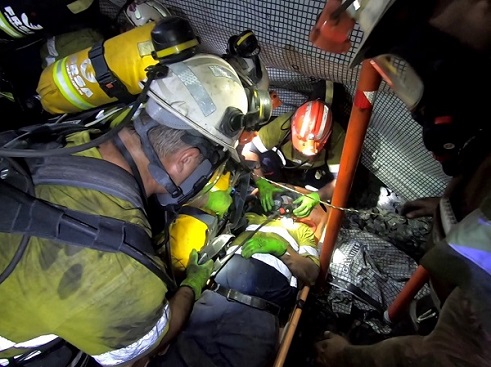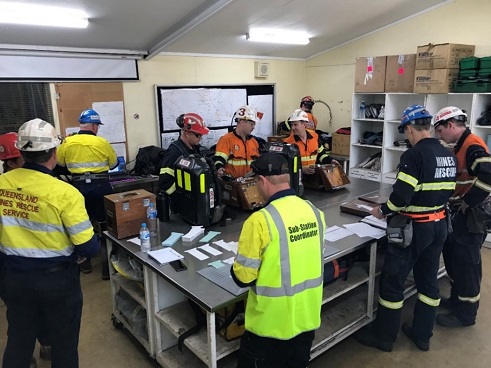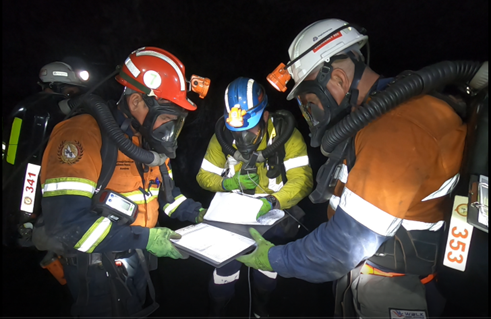Emergency exercises prepare coal mine workers for the real deal
Queensland’s biggest underground coal mine exercise is about to kick off for another year, and for the first time Resources Safety and Health Queensland (RSHQ) is releasing footage from the mock emergency.
In 2022, workers from Carborough Downs Coal Mine and volunteers at Queensland Mines Rescue Service (QMRS) joined forces with RSHQ to prepare for life-threatening emergencies on the job.
Two events, known as ‘Level 1 emergency exercises’, were hosted by Fitzroy Mining's Carborough Downs Coal Mine underground operation, 25km east of Moranbah in the heart of the Bowen Basin.
The exercises are kept as a surprise to the mine site and are often done at the end of the workers’ shift to challenge them.
The first exercise, with QMRS, simulated a roof collapse which caused the gas concentration to reach an unsafe level inside the mine.
A supervisor was also unaccounted for, and the last known location was in the area affected by the collapse.
The exercise tested communication systems in place as well as the quality of equipment.
“RSHQ does all it can to prevent these emergencies in real life, but when they do occur we need to be ready,” said RSHQ Coal Mines Chief Inspector Jacques le Roux.
“These exercises can mean the difference between life and death.”
The second scenario, with Carborough Downs Coal Mine workers, mimicked a loss of energy supply from Ergon which wouldn’t be back up and running for at least 10 hours.
Soon after the energy supply was cut, part of the mine collapsed, all communication to the surface was lost, and a crew member was struck in the head knocking him unconscious.
Coal mine workers had to communicate with one another to rescue their colleague, all while monitoring gas levels to secure their own safety.
It was even more challenging when workers were forced to walk most of the way and carry their injured colleague to the surface.
Underground coal miners usually have access to vehicles called Driftrunners but they were unable to be driven past a certain point due to methane levels in this exercise.
“The teams went really well, and we attribute that to a lot of the work the mines do outside of these big annual exercises,” said Mr le Roux.
“It also helps that most coal mines have QMRS volunteers working at their sites, so their skills become invaluable when disaster strikes.”
Queensland coal mines are required by law to have a minimum of 5% of their staff trained in underground mine rescue.
Level 1 training, involving crews from across the state, occurs once a year, but each mine must undergo its own Level 2 training as well.
The exercises give underground coal mine workers the ability to self-escape and triage injured co-workers, among other skills.
“There is always room for improvement but that’s why we do these exercises, which highlight the importance for coal mines to re-evaluate their aided escape strategies,” said Mr le Roux.
“Our hope is that this experience and the findings in each annual report can benefit emergency response systems in other mines across Queensland and the rest of the country.”
The 2023 Level 1 emergency exercises will be held at an underground coal mine in September and November.
A report on the 2022 exercises is available here.
A new push by RSHQ means open cut coal mines will now have mandatory Level 1 training by 2025 as well.



Media contact
Amy McCann
0457 094 250
Last updated: 18 Aug 2023